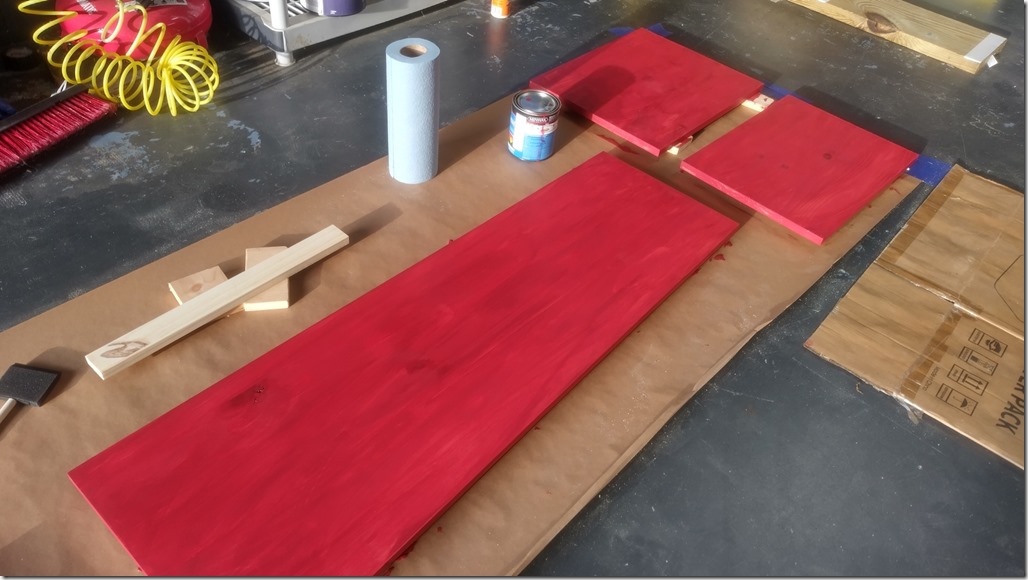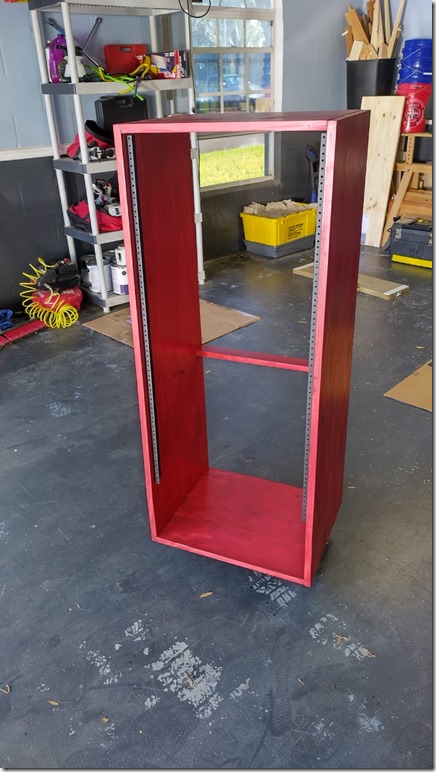As I’d mentioned previously, I’m back on the music equipment hoarding train. I didn’t really want to make that post longer, so I glossed over the details on the repair. So I’ll now do it here, as well as comment on my most recent purchase.
The Akai AX60 was sold to me known to have multiple keys not working. Once home and disassembled, I confirmed that those were the only keys not working. My first assumption was that the rubber domes that indicate the key has been pressed needed cleaning. Cleaning the contact pads did not improve the situation. Swapping the domes with a different rubber dome part didn’t help either. So that means the problem is further along the line.
I traced the key switch back and found a place on the circuit board that had some serious corrosion, from what, I don’t know. Hmmm. I used the multimeter to test continuity on the trace from a point before and after the corrosion and found that yes, there is a break there. I followed the other non-working keys and they also went through that same trace. That seems like the culprit. I took some wire and jumped the trace from the two measuring points I was using and well, that worked! And when I put it back together, it didn’t. Then I took it apart and it did again. I’ve forgotten exactly what the cause was, but I did get it all put back together one more time and it works – mostly. Now, a different key – and only one key – doesn’t work. I’m not in the mood to take it apart for the nth time, so at some point if I decide the replace all the sliders (which need replacement), I’ll address it then.
Then I got a Korg M1R which had a non-working headphone jack. This is not a deal breaker for me, because I’m never going to use the headphone jack, but I wanted to see if I could solve it. I used the oscilloscope and played some notes into the device while looking at the output. It wasn’t showing any difference between silence and notes playing. The problem was further up the line.
I utilized MS Copilot a lot and used it to bounce ideas off of and it was very helpful explaining the things I was seeing and how to troubleshoot. Very much a Copilot, here. I needed to test a different board and when I went to remove said board, I saw one of the screws was missing. Hmmm. This device has been touched before. When I pulled out the board, I looked closely at the back and saw one IC had some residual flux on the board. This board has been repaired before. Hmmm.
Copilot and I had a big conversation about this and the part that was replaced and it was actually pretty funny that copilot was getting a real attitude about the whole thing.
"The A6458S is a dual operational amplifier (op-amp), not a power amplifier — and it is not designed to drive headphones directly, especially not from a 12V rail."
Since I said the part looked like it was replaced, it wasted no time in blaming the previous person for using the wrong part. Eventually, I found the right part that was supposed to be used and that part is… just not around anymore. There’s literally one on eBay and it’s in Spain. Someone makes an adapter board to convert the pinout to a more current chip. Meh, I’m going to live without the headphone jack.
Finally, last night, I purchased a Line6 effect unit that was known not to power up. The seller said he sold it on eBay, but the buyer reported it as not working and returned it. I was eager to see if it was just a simple blown fuse, because I’ve had a simple fix like that before. When I opened the top. one of the last things I expected to see was in there – paper towels and duct tape. What the fuck?

Poking around quickly identified the problem, the power transformer on the circuit board was broken. The transformer is a big block of metal soldered to the board with 8 pins. After removing the towels and tape, I literally just lifted the transformer right up and off the board, leaving all 8 pins still in the circuit board. That’s not supposed to happen.
Looking at the damage in front of me, it seems that the unit had taken a fall with headphones plugged into the front socket. The headphone jack was snapped, the wire connecting the headphone jack board to the main board was damaged, and obviously the transformer had broken away from the main board. It seems odd though, because the transformer should have been secured to the board with a cable tie, two pieces of which were floating around in the case. Had it been cut before the fall or after? No one would ever know.
So this device has been through multiple hands and I have no idea who is at fault, but I still want to fix it. Like the M1 headphone amplifier IC, the power transformer I need is no longer available, probably to be expected for a 25yr old device. So what I will attempt doing is adding a new power jack to the back and using an external 9V AC/AC adapter. which is readily available and used by many products from other manufacturers, and also Line6’s other products. I’m not a fan of external power bricks, but there’s not really any other option. At the same time, I ordered a new headphone jack that I can easily solder in and replace, even though I don’t plan on using it.
Followup: After a couple failed attempts at wiring in the power supply, I did it the right way and I got lights. Some lights, and also got an audio thump, so I knew I was on the right track. No display and no buttons or knobs did anything. Also no output audio. Right from the start in my initial inspection of the device, I had noticed a component on the board that was loose, which is an oscillator crystal that is used for CPU processing. I relayed my thoughts to Copilot who agreed and said if the crystal was broken, the CPU wouldn’t start, which would mean no display or any other button or audio processing.
I ordered and received the new crystal, which I had to order from an arcade machine repair shop because no one else had crystals in that specific frequency, and the headphone jack arrived a couple days earlier. I quickly replaced the crystal component and magically, it all started up. It was a really good feeling. Everything works very well. For a 25-yr old device, it doesn’t have any scratchiness in the pots or the jacks. Aside from that tumble it took, it must’ve been pretty well cared for.
I rank this as my most advanced repair yet, which isn’t really saying much because the failed component gave itself away through physical damage. Still though, identifying (or correctly guessing) and replacing the single broken piece and going from 0 to 100% was pretty fulfilling. And replacing a power supply was not on my list of things I saw myself doing, either.











